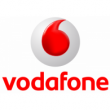

SNS Research has released a new 239-page report, The LPWA (Low Power Wide Area) Networks Ecosystem: 2017 – 2030 – Opportunities, Challenges, Strategies, Industry Verticals & Forecasts. (more…)
December 13, 2016
Posted by: Avadhoot Patil

Huawei has released what is said to be the mobile communications industry’s first systematic metrics for the connection experience of Internet of Things (IoT) devices. (more…)
November 29, 2016
Posted by: Avadhoot Patil

u-blox, a global provider of wireless and positioning modules and chips, has become an official member of ESMIG (the European voice of smart energy solution providers). (more…)
November 16, 2016
Posted by: Avadhoot Patil

CEVA, Inc., a licensor of signal processing IP for smarter, connected devices, has introduced a new lightweight, multi-purpose, processor IP core to streamline the design of cellular-enabled low data rate industrial and consumer loT devices. (more…)
October 12, 2016
Posted by: Avadhoot Patil

Among the billions of devices predicted to make up the Internet of Things (IoT), many demand range and mobility that suggest a low-data-rate GSM connection is the ideal M2M data channel, writes Joerg Koepp, market segment manager at Rohde & Schwarz.
2G offers adequate performance and great coverage and reliability, but some operators are keen to turn these off to concentrate resources on their higher-value 3G and 4G subscribers. A press release issued last spring by Ovum analyst Nicole McCormick added an extra dose of uncertainty by suggesting that some might axe their 3G networks first, without suggesting any reprieve for 2G.
Fortunately, GSM standards makers have considered the needs of IoT applications and made provision for machine-type communications (MTC) within the latest LTE Releases, 12 and 13, which are now being finalised. These standards have not been easy to establish, and neither are they extensive, because the types of applications likely to communicate over cellular networks are extremely diverse and have a wide variety of requirements.
Power and cost concerns
To provide broad support, the specifications now emerging are focused on a small number of optimisations. The latest Release 12 document, for example, establishes a Power-Saving Mode (PSM) and a new class of simple, low-cost LTE devices known as Category 0. PSM is especially important for battery-operated devices. Device category 0 addresses the requirement for low cost by having only 50% of the complexity of a category 1 modem.
In PSM the front-end circuitry is turned off, but the device remains registered in the network and so is always ready to send messages. This saves power in applications that must send data periodically, but is not suitable if a fast response or time-critical reaction is required. End-to-end tests are essential for matching the application behaviour to the network behaviour, such as to determine the optimal timer values for idle mode and power-saving mode.
The Category 0 specification supports data rates up to 1Mbps, which allows low-cost LTE modems by minimising processing-power and memory requirements. Manufacturers can also eliminate full duplex mode and multiple antennas, hence saving the requirement for the duplex filters that are otherwise needed to prevent interference between the transmitter and receiver. Some Category 0 devices are already being developed and will probably be introduced in 2016.
More and better
Release 13 is where the march towards LTE for M2M really hits its stride and assumes the title LTE-M. Significant changes including lower uplink/downlink data rates, lower bandwidth and reduced transmit power will all contribute to lowering cost. Further reductions in power consumption are also planned. LTE-M will thus offer a solution for applications with response-time requirements that prevent the use of PSM as provisioned in Release 12.
LTE-M will introduce other techniques to increase range, such as multiple repetitions of data or less stringent time and error requirements. These will be useful for devices that are dispersed over a large geographical area – sensors in agricultural applications, as just one example – or smart meters installed under extreme receive conditions such as in a basement.
Low-Power WAN (LP-WAN) technologies have been presented as alternatives to GSM, as industries seek a future-proof network free of the threats of closure that surround 2G and 3G. Sigfox and LoRa are among the most widely known, while others include Weightless-N and RPMA.
At this point it is worth noting that the GSM Association (GSMA) has launched its own LP-WAN initiative. Infrastructure, modem and chipset manufacturers are currently working on this with mobile service providers. Field trials are under way, and the committee has already put forward a narrowband IoT standard, NB-IoT. NB-IoT aims to ensure extremely low power consumption and costs, while maximising reception in buildings and supporting large numbers of devices with very little data traffic.
Clearly the GSMA has identified tremendous value in the opportunities the IoT can offer for its members, and is working hard to ensure the data from as many of the IoT’s billions of nodes as possible will be carried over GSM networks. We can expect the results of the current initiatives to have a powerful influence on the new 5G standards as these emerge.
June 14, 2016
Posted by: George Malim

Mobile World Congress 2016 did meet expectations: a relentless show with people walking endlessly between halls for meetings, seeking opportunities, and listening to the latest announcements from the industry, write Robin Duke-Woolley, the chief executive of Beecham Research, and Saverio Romeo the firm’s principal analyst. Over 100,000 visitors this year – the most ever – and the food at the show was even more atrocious than last year. How do they get away with it at such high prices? (more…)
March 8, 2016
Posted by: George Malim

China Mobile, China Unicom, Ericsson, Etisalat, the GSMA, GTI, Huawei ,Intel, LG Uplus, Nokia, Qualcomm, Telecom Italia, Telefónica and Vodafone have held a preparatory event, chaired by Vodafone, to lay the foundations for a new industry forum aimed at accelerating the ecosystem around Narrow Band Internet of Things (NB-IoT) technology. (more…)
November 10, 2015
Posted by: George Malim